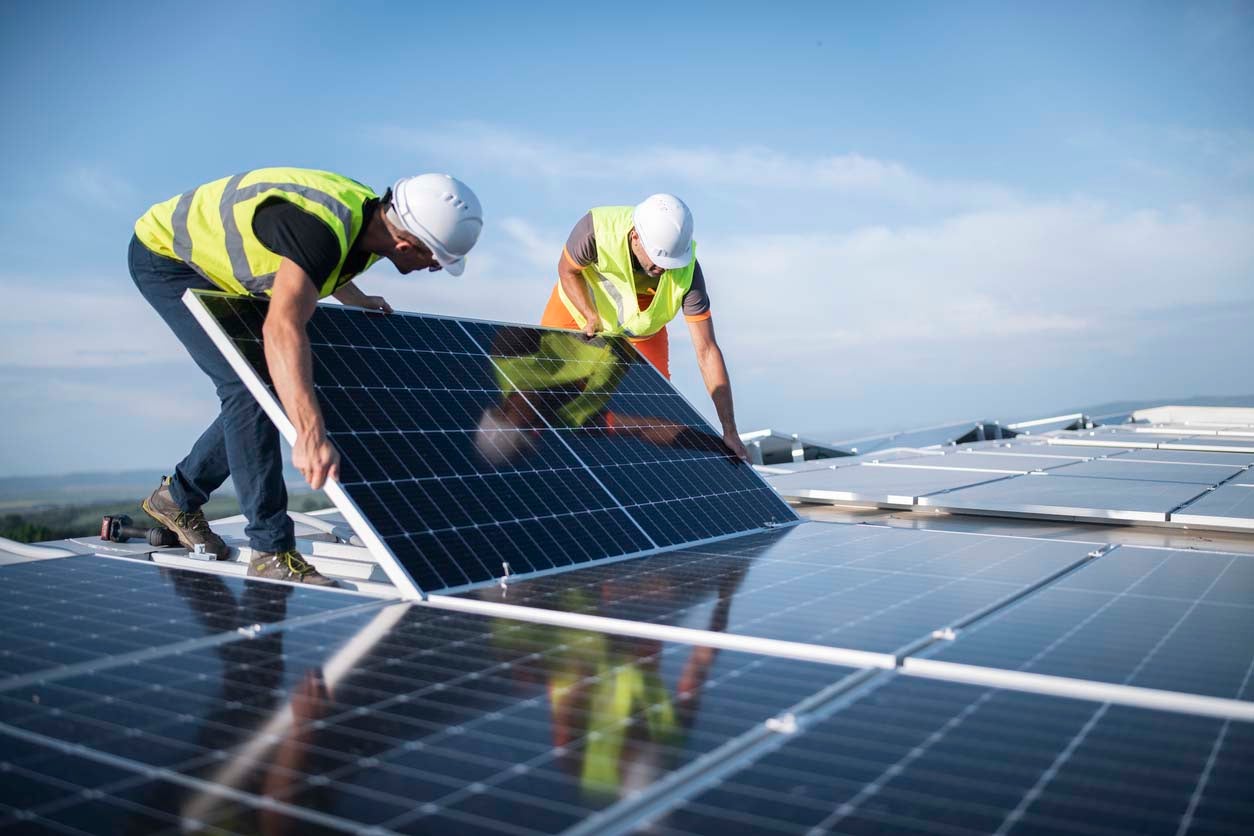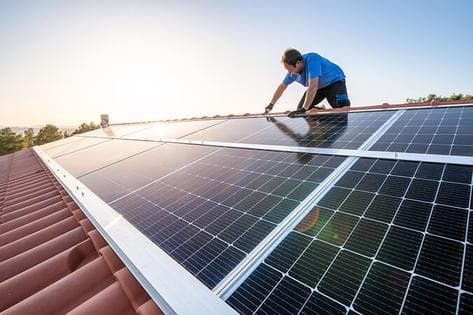The Only Guide to Solar Panel Installation Virginia
The Only Guide to Solar Panel Installation Virginia
Blog Article
Virginia Solar Panel Estimates: Lumina Solar Specializes In Offering Advanced Photovoltaic Solutions For Houses And Organizations
History and Founding
Have you ever questioned how a photovoltaic panel business springs from a simple spark of inspiration into a powerhouse of renewable resource? It often starts with a vision-- one sustained by a blend of development, determination, and a pinch of serendipity. The journey of lots of solar companies mirrors the advancement of the innovation itself: from bulky, inefficient panels to sleek, high-efficiency marvels harnessing the sun's bounty.
The Early Days
In the late 20th century, when solar power was still a niche concept, leaders planted seeds for what would end up being a worldwide motion. Imagine a small workshop filled with curious engineers, tirelessly exploring with solar batteries. Their enthusiasm was palpable, often driven by a desire to fight environment modification and minimize reliance on fossil fuels.
One such anecdote has to do with a creator who, inspired by a camping trip, recognized that even in remote locations, the sun might power vital devices. This easy observation triggered a company's mission to equalize access to tidy energy.
Founding Principles

- Development: Constantly pressing the boundaries of solar technology to enhance effectiveness and sturdiness.
- Sustainability: Dedicating to environment-friendly manufacturing and minimizing carbon footprints.
- Ease of access: Making renewable resource services economical and useful for daily users.
Turning points in Development
| Year | Key Event |
|---|---|
| 1985 | Company founded in a little garage, focusing on research and development. |
| 1995 | First industrial solar panel item introduced, gaining local attention. |
| 2005 | Expanded to global markets, accepting global eco-friendly energy goals. |
| 2015 | Presented cutting-edge photovoltaic panel innovation with boosted energy conversion. |
Isn't it fascinating how these incremental steps, typically neglected, form the energy landscape today? The photovoltaic panel company story is not practically technology; it's about a relentless mission for a brighter, cleaner future.

Innovations in Photovoltaic Panel Technologies
Ever discovered how some photovoltaic panels shine brighter and last longer? It's not magic; it's the science of photovoltaic performance. Modern solar panel companies invest heavily in technologies like bifacial cells, which capture sunlight from both sides, enhancing energy harvest without broadening roofing area. Have you ever wondered why some panels carry out much better on cloudy days? That is because of advances in thin-film solar innovation, which grows under diffused light conditions.
Product Variations Tailored to Distinct Requirements
One size never fits all. Photovoltaic panel providers now provide:
- Monocrystalline panels for maximum performance and smooth looks, perfect for space-constrained rooftops.
- Polycrystalline panels, which provide an economical option without sacrificing excessive output.
- Building-integrated photovoltaics (BIPV), combining solar tech flawlessly into architectural aspects like windows and exteriors.
Picking the right product isn't almost in advance expense; it has to do with matching your environment, energy goals, and long-lasting cost savings. For instance, homes shaded by trees require panels that stand out in low-light scenarios, something many ignore up until energy bills climb up suddenly.
Technical Tips for Optimal Selection
- Evaluate the temperature coefficient-- lower values indicate panels lose less effectiveness on hot days.
- Search for panels with boosted anti-reflective finishings to make the most of light absorption.
- Think about the panel's service warranty not just for problems, but for guaranteed power output over years.
- Don't underestimate the importance of the inverter innovation matched with the panels; it can make or break your system's performance.
Beyond Panels: Emerging Patterns
Think of photovoltaic panels that adjust their angle automatically to chase after the sun-- tracking systems are becoming more accessible, increasing yield substantially. Or solar tiles that blend invisibly into your roofline, changing your home into a quiet, self-sufficient power generator. These innovations are improving what a solar panel company provides-- not simply items, but integrated energy options.
Market Existence and Global Operations
Ever question why some solar panel business seem to grow up in every corner of the world while others barely make a ripple? The difference lies not just in innovation however in mastering the art of navigating varied markets. Expanding worldwide resembles planting seeds in various environments-- you must comprehend each environment's special conditions to flourish.
Take, for example, the elaborate dance of logistics and supply chain management. Delivering panels midway throughout the world isn't just about distance; it has to do with timing, custom-mades, tariffs, and adjusting to local demand changes. A company with robust global operations prepares for these variables, making sure panels arrive on schedule without inflating expenses. This insight is no small feat and often separates market leaders from fans.
Secret Strategies for Expanding Market Presence
- Localized production: Establishing production hubs near target audience lowers shipping delays and import intricacies.
- Strategic collaborations: Collaborating with local companies speeds up market penetration and develops trust.
- Adaptive item style: Customizing photovoltaic panel tech to weather, sun intensity, and infrastructure nuances boosts efficiency and acceptance.
What about the human factor? Photovoltaic panel business running globally need to fix up cultural differences and regulatory subtleties without forgeting their core mission. What works in a sun-drenched desert may falter in a damp seaside region. Often, the most ingenious option is just listening-- soaking up regional insights to improve innovation and technique.
Professionals typically advise a phased rollout instead of a shotgun growth. Why run the risk of overextension when determined growth builds sustainable momentum? Scaling wisely means balancing aspiration with operational durability - Solar Panel Company. After all, in the race for sustainable energy dominance, persistence can be as valuable as speed
Environmental Effect and Sustainability Practices
When photovoltaic panels first emerged, many presumed they brought absolutely no ecological luggage. The truth is more nuanced. The production of solar batteries includes uncommon earth metals and energy-intensive procedures, which can leave a large carbon footprint before the panels even reach rooftops. Yet, the true environmental cost depends greatly on the sustainability practices utilized by the photovoltaic panel company throughout the lifecycle of their items.
How frequently do we stop briefly to consider what occurs to solar panels at the end of their beneficial life? Unlike batteries or electronic devices, photovoltaic panels can last 25-30 years, however disposal and recycling paths remain underdeveloped in many regions. A business committed to reducing ecological harm will have a robust plan for recycling photovoltaic products, restoring valuable silicon, glass, and metals to avoid land fill build-up.
Secret Sustainability Strategies
- Utilizing low-impact production techniques that minimize water and energy consumption.
- Executing closed-loop systems to recycle production waste back into brand-new panels.
- Participating in transparent supply chain audits to make sure ethical sourcing of raw products.
- Designing panels for much easier disassembly to assist future recycling efforts.
It deserves noting that some solar companies have pioneered ingenious techniques, such as incorporating naturally degradable components or utilizing less hazardous chemicals during fabrication. This not just lowers environmental stress but likewise sets a precedent for the market. The concern stays: can the solar market genuinely pivot towards a circular economy design without sacrificing efficiency or affordability?
Specialist Tips for Assessing Sustainability
- Inquire about the business's commitment to carbon-neutral production and whether they offset emissions.
- Examine if they partner with certified recycling centers committed to photovoltaic panel waste.
- Look for transparency reports detailing environmental effects and sustainability objectives.
- Consider the longevity and guarantee of panels as an indirect step of resource efficiency.
In the end, choosing for solar energy needs to mean more than just slashing electricity expenses; it's about nurturing a future where energy is harvested properly and waste is thoughtfully managed. Solar panel companies that welcome this viewpoint not only illuminate homes but also cast a brighter light on sustainable development.
Report this page